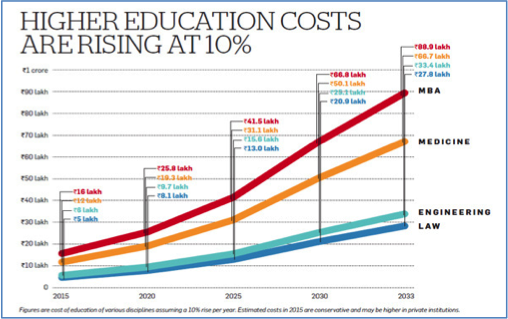When Wife is the Lone Survivor
June 15, 2018 Leave a comment
Worldwide, older women end up living in financial stress a lot more than older men. In US, women comprise three-fourth of seniors who are considered poor. There is no official data for India. But, since life expectancy of women is more than men, one can easily correlate with US data.
It has been proven that women have higher life expectancy than men. This means that while planning for retirement, women will have to plan for a longer period. In case a woman is fully dependent on her husband and is not financially aware, she can get into trouble after the husband passes away. So, whether a woman is planning her retirement alone, or with her husband, the number of years post retirement is an important aspect of retirement planning.

It is common to see women give up their careers or take up lesser-paying jobs to take care of the children, maintain work life balance etc. The percentage of women doing this is high in India when compared to western countries. This means women will have to save more in a short period to fulfill their needs. So, they should start planning for retirement and stick to a plan right from the beginning of their careers. That is the time when there are limited responsibilities and so can save sizeable amounts.
In all families, Rich or Poor, Urban or Rural, women tend to avoid taking financial & investment decisions. Not only women generally earn less, but they also work for fewer years because they usually take time off for child care. On an average, they spend about seven years away from work, which means they are not saving anything during this period.
The lack of financial awareness among women makes them financially vulnerable while their Husbands are no more. They will either get too defensive about investment or will leave too many decisions for outsiders. Both the approaches have their drawbacks.
What do you need to do to avoid a Situation like this?
- Make women of the home party to all financial decisions
- Ensure that all assets are jointly held
- No Loans shall remain outstanding for which the spouse has to repay.
- A WILL, and a financial emergency kit (list of important documents, contact details, procedures etc.,) should be in the know of your spouse.
Apart from keeping in mind these moot points, Every couple should discuss the contingency plan with their advisor. The continuity of cash flows, just in case one of the spouses were to go, is perhaps the most important aspect of retirement planning. At SAKSHAM WEALTH, we are always available to discuss the finer nuances of your financial planning.

Sameer Rastogi,
+91-9891198999
SAKSHAM WEALTH Solutions Pvt. Ltd.
Article published in Wealthy & Wise Magazine ( June 2018 Issue)
To read more articles http://sakshamgroup.com/new/wealthy-wise/


